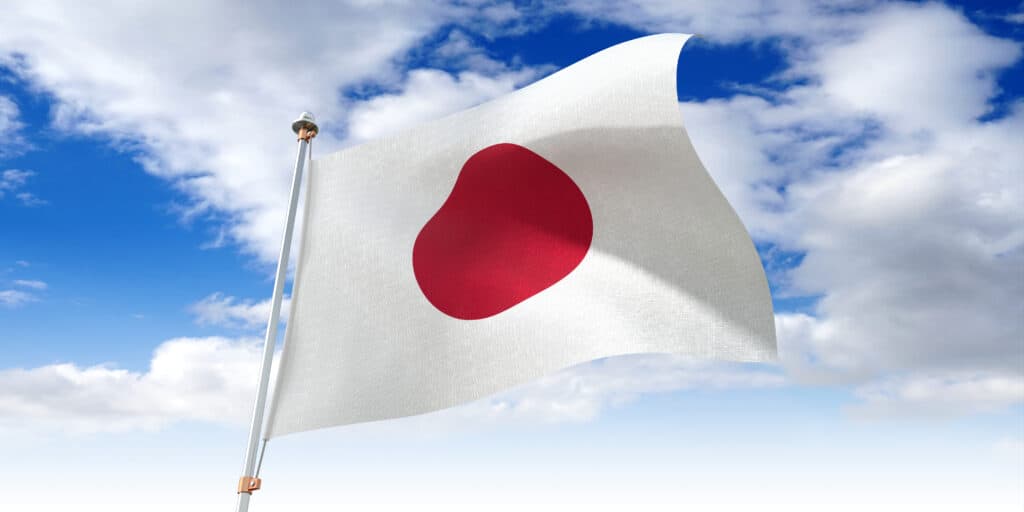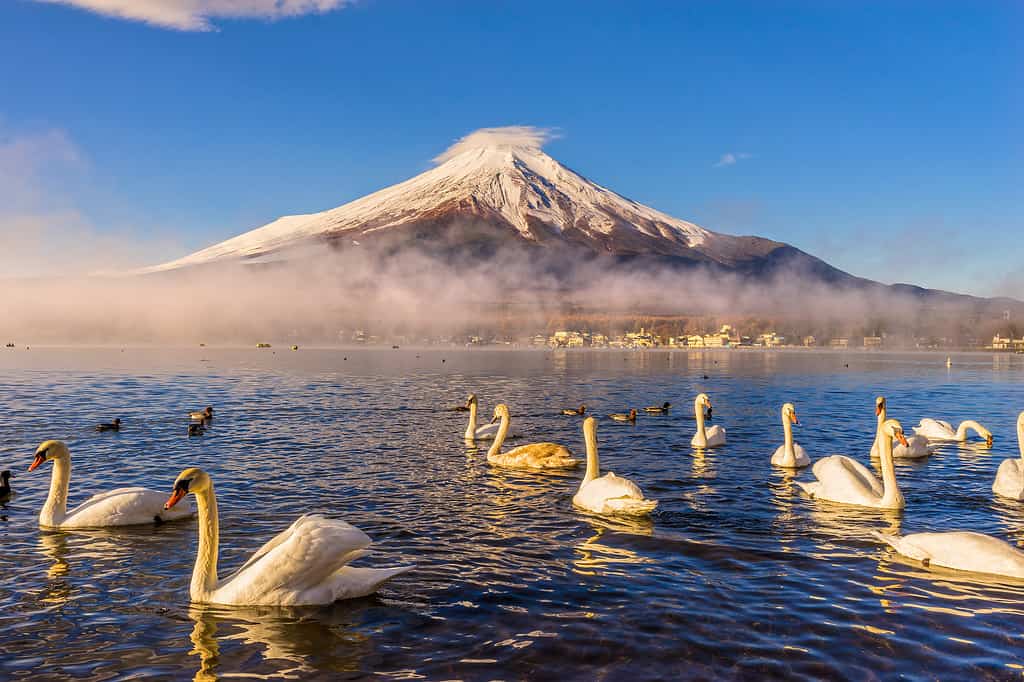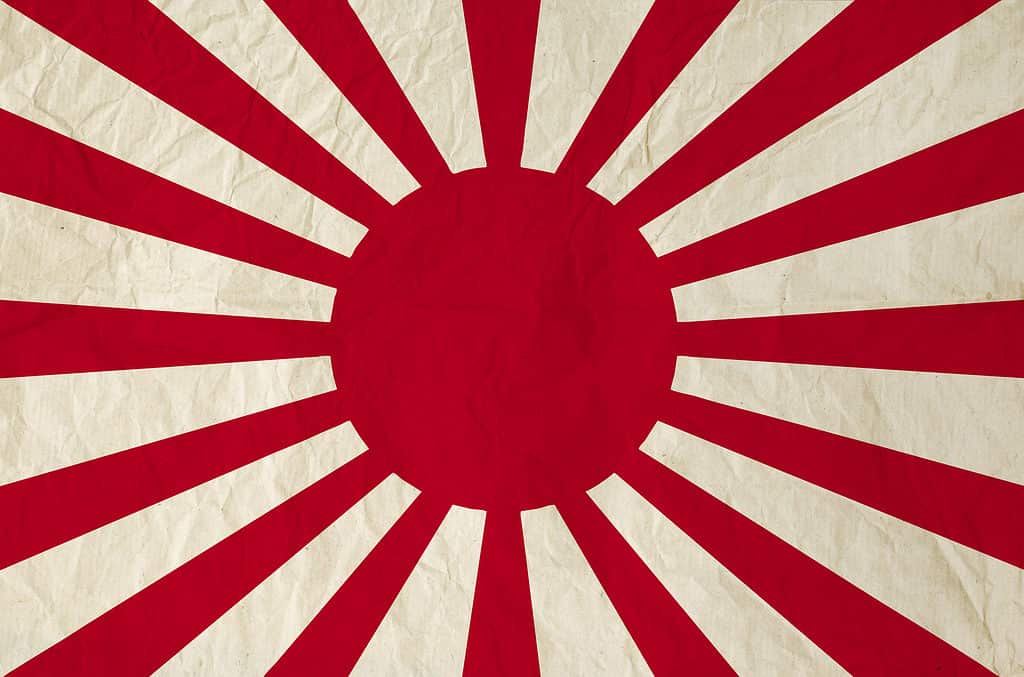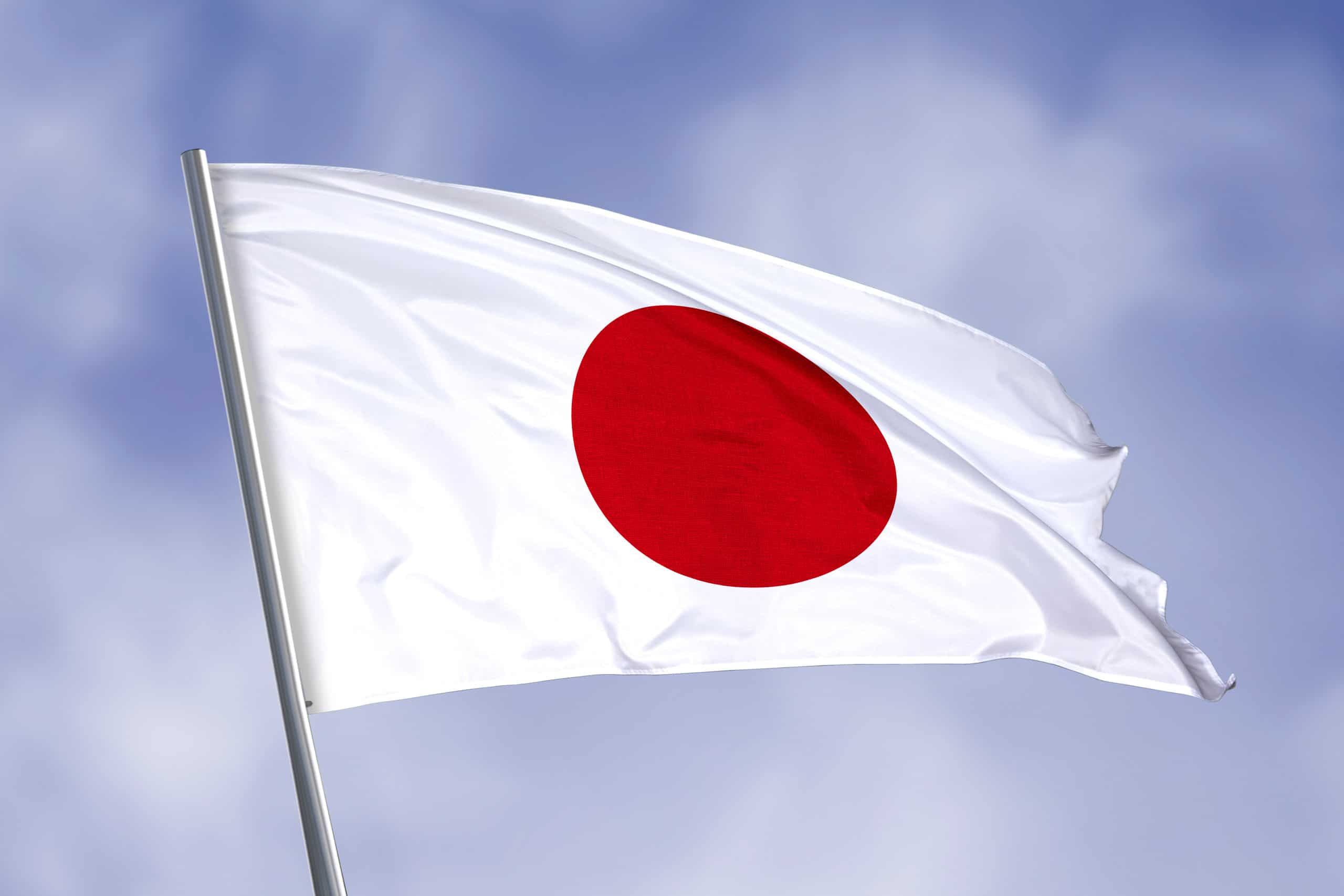Though the originator and meaning aren’t historically verified anywhere, it’s widely accepted that Japan’s nickname is the Land of the Rising Sun. Japan’s flag, global reputation, and culture reflect the nickname.
Below, discover more about Japan’s nickname, including the first mentions of the term “Land of the Rising Sun” and how the nickname affects the nation today.
Japan: The Land of the Rising Sun

The flag of Japan has significant history and symbolism.
©PX Media/Shutterstock.com
Between history and linguistics, much evidence exists for Japan’s nickname.
Mythology and History

The creation myth of Japan involves love, the sun, and a god forming the nation of the muddy sea.
©Luciano Mortula/iStock via Getty Images
The Japanese creation myth most accepted by its residents is the story of Amaterasu, the daughter of the godly couple Izanagi and Izanami.
According to the myth, life grew from a single germ. It combined all the elements that existed together until the mixture separated into a heavy part and a light part. The heavier part that sank became the muddy sea, which covered the entire earth. At the same time, generations of primordial gods came into being. The last two created, Izanagi and Izanami, wondered what lay beneath the muddy sea and pulled clumps up until they hardened and formed the islands of Japan.
The couple descended onto the island to explore, each creating life where they walked. When they reunited with each other on the fertile land, they decided to create a family. They bore three children: Amaterasu, a beautiful girl too radiant to live on land so she became the sun; a second daughter who became the moon; and a troublemaking boy who was relegated to the sea, where he creates storms.
Though she resided in the sky as the sun, Amaterasu bore a son of her own who became the first emperor of Japan. From ancient civilizations until today, Japanese people still consider the emperor “the son of the Sun.”
In history, both figures and nations perpetuate the nickname of “the land of the rising sun.”
The nation of China, as an ancient civilization with a history reaching back to 2000 BCE, had a hand in nicknaming the island nation. China saw the sun to rise over Japan. Though Australia and New Zealand sit farther east than Japan does, China didn’t recognize their existence when they knew of Japan. Other historians point to Prince Shōtoku in the 600s who wrote a letter to China addressing the then-empress of Japan as “the Son of Heaven of the Land where the Sun Rises.”
Linguistics

In kanji, “Japan” or “nihon” literally translates to “sun origin.”
©Viktoriya Abdullina/iStock via Getty Images
The Japanese language uses three alphabets: hiragana, katakana, and kanji. Language learners can add a fourth for their benefit — romaji, or the romanization of Japanese words. Hiragana and katana are syllabary; it’s a phonetic letter system used to spell words. Kanji, on the other hand, is a collection of characters used for writing nouns, verbs, and adjectives. Each symbol stands for a word. Since ancient Japan, the Japanese have adopted these traditional Chinese characters as part of the country’s writing system.
With the foundation of the Japanese language in mind, let’s look at the word “Japan” in kanji: 日 本, or nihon. The kanji character 日 means sun while the character 本 stands for origin. When analyzed together, the kanji for Japan literally translates to “sun’s origin.” As different languages translate the meaning, it becomes an elongated form with some liberties taken: “the land of the rising sun.”
The Rising Sun of Japan’s Flags

An issue with the Rising Sun flag is its association with Japanese imperialism.
©Mybona/Shutterstock.com
The current flag of Japan, conceptualized and made official in 1999, represents the sun. The flag’s design is simple — a red disc on a white field — but holds deep cultural significance.
The official name of the flag is Nisshōki (unofficially Japanese people call it Hinomaru, or sun circle). The World War II-era flag of Japan’s army and navy, the Rising Sun flag, looks similar to the national flag. Instead of a red disc on a white background, however, the red disc has 16 spokes. In the army version, the red disc remains centered while the disc sits to the slight left of the flag in the navy’s version.
Some historians believe some version of the current national flag of Japan has existed since the twelfth century. The National Flag and Anthem Law in 1999 made the white and red design permanent — though the actual red color to use isn’t specified.
The Sun at the Center
The sun remains at the center of Japanese mythology and history. Between Amaterasu’s influence on the creation of Japan and its emperor, the reputation of Japan in the global sphere, and Japan’s own choice in its flag design, the sun remains a central idea to the nation. So, the land of the rising sun persists as a testament of self-discipline, tradition, and deep cultural appreciation.
Thank you for reading! Have some feedback for us? Contact the AZ Animals editorial team.








